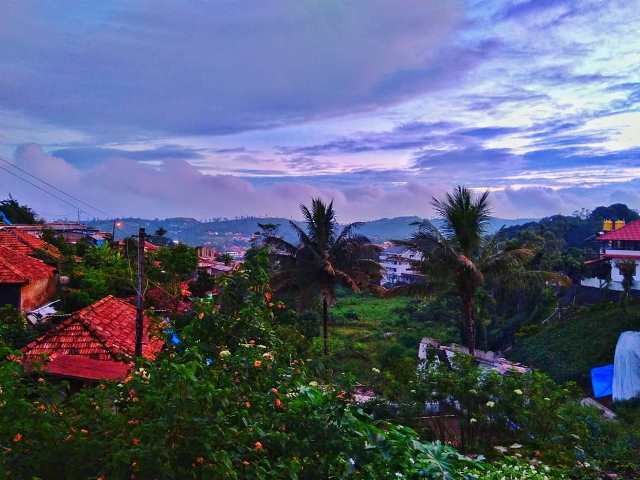We drove through the town of Madikeri looking for a meal. It was a little over 2 pm and we were desperate for substantial lunch. Looking around, we found a board that said ‘Coorg Cuisine,’ that’s it, that is the one I exclaimed! We had heard about this little Kodava eatery that serves traditional Kodava food and were eager to try it. The Kodavas or Coorgs are an early indigenous tribe of warriors, native to Coorg. They are said to be a patrilineal, ethno- lingual tribe belonging to the Kodagu region of Karnataka.

This unassuming eatery was nestled between the lush green hills of Madikeri and surrounded by a view of colourful brick homes. The day we reached Coorg, we had two clear priorities, good coffee and local food.
So, like most people, we Googled the best places to eat in the area and this little eatery was at the top of the list. We drove down, a fifteen minute drive from where we were residing and found ourselves in one of the most crowded areas of the town. At first glance, the restaurant felt slightly underwhelming to look at. It wasn’t an exclusive restaurant building; it had a few stores on the lower level selling honey, clothes and other items. We made our way towards the building with bright blue walls and climbed up the stairs.
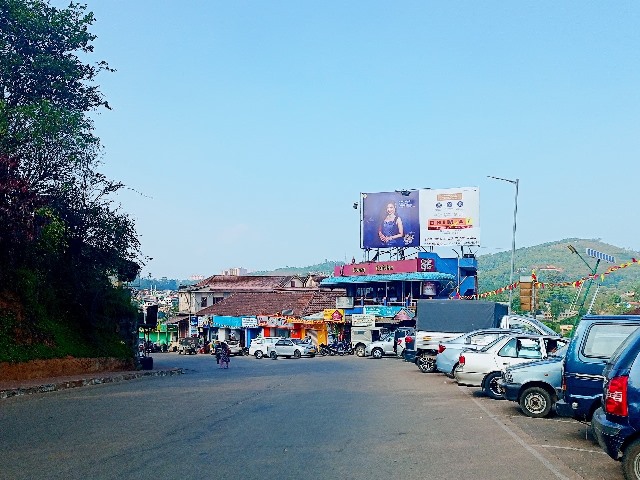
On the second floor of a two story structure, we found a bustling restaurant that seemed to be at complete occupancy. To find a seat here was luck and to find everything available on the menu could be attributed to good fortune, since we were told they only make a certain amount per day. Upon entering the eatery, we were warmly greeted by the owners, Girish and Pushpa Kannachanda and their son Shayan, and were shown to our seats.
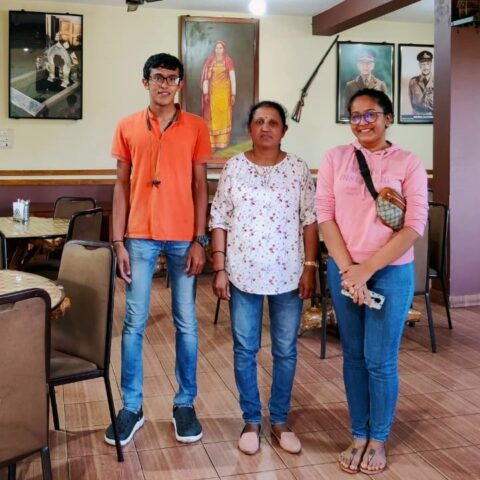
The beige walls, brown décor and checkered circular tables transported us to a simpler time, where quality food and warm service take precedence over elaborate, over the top grandeur. Pictures of locals with traditional Kodava attire frame the walls of the restaurant, with a portrait of Shayan’s grandmother, whose recipes are being served today, placed in the centre.
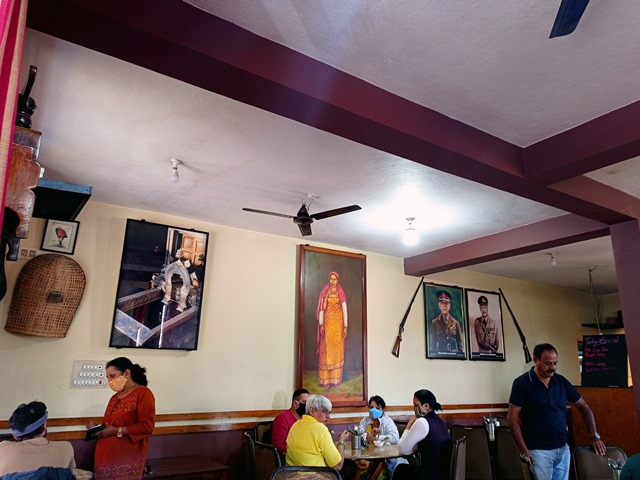
My first thought upon entering the place was of the history this place held. On the outside it seemed simple, modest and homely, but inside, each corner felt like it could compile a book of all the stories it had collected throughout the years. Like the walls had treasured each local, and traveler, that found themselves sitting on these tables and enjoying a meal. Amidst the aura of unfamiliar comfort, we settled down and found ourselves browsing through the menu, looking through all the options available.
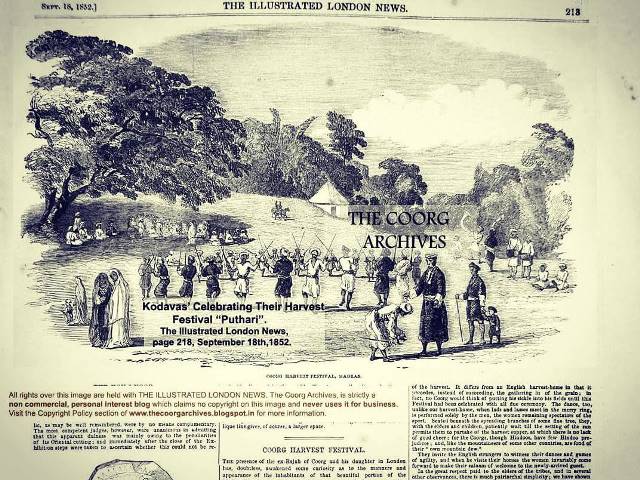
This eatery, we were told, has served tourists and locals alike for past 17 years, with traditional cuisine from the tribe. It was pioneered by Girish and Pushpa, with an aim to popularise and preserve their local cuisine. The Kodava tribe’s history is interwoven with mixed claims of their origin, with some claiming that they are indigenous to Kodagu, and others claiming that the tribe has foreign ancestry. Irrespective of their origins, their customs, traditions, culture and language is what makes them so strikingly different.
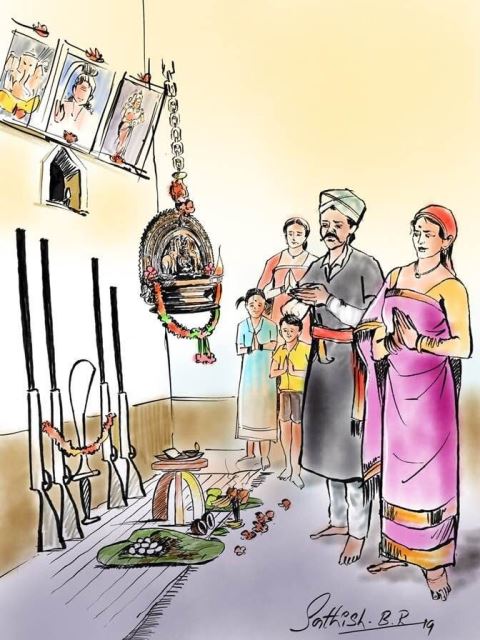
The Kodavas are worshippers of nature and ancestors, with weapons playing an important role in their culture. The people of the tribe are one of the few that are allowed to possess and carry firearms in India, with many of their customs, like the birth of a boy or the death of someone from within the community, calling for gunshots fired in the air. They are known to be a warrior tribe with ties to martial tradition; and celebrate Kailpoldu, or the annual festival of weapons, at the beginning of September, that signifies the completion of the replanting of the rice crop.
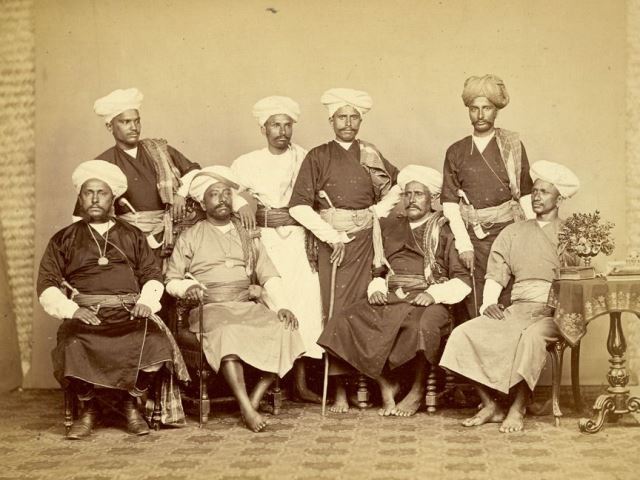
At the restaurant, the menu was inscribed with traditional Kodava delicacies like mutton and chicken curry, pork chops, pork curry, tender bamboo curry and with each new dish, our confusion grew. Our hunger roared ferociously and so asking for help was what we opted for. We spoke to Pushpa, the co-owner, a serene looking lady who made her way towards our table and took us through a few options that we’d like. The Pandi or pork curry was a top recommendation, along with the tender bamboo shoot curry, koli or chicken curry, a dry pork fry, Koot or mixed vegetable curry and some fluffy Neer dosas to mop it all up. Pork is an integral part of the Kodava cuisine, and has been the prime meat within tribe’s food culture since the very beginning. Wild boar was initially the meat of choice within the tribe, especially during the British rule in India. But since hunting laws are stricter now, different versions of pork are used. Rice, since grown in abundance within the area also has an important place within the cuisine, and is used to make dishes such as Paputtu (rice cake), Neer dosa’s (rice crepes), Akki roti (rice bread) and a lot more.
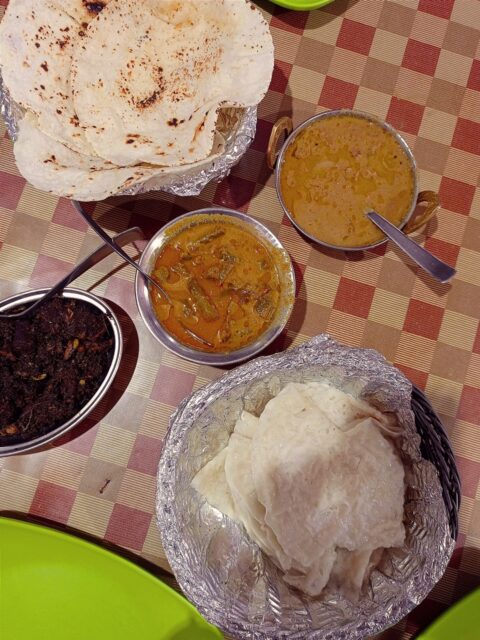
The sheer variety of dishes caught our eye, but we chose to go with what was recommended to us, as we had no prior experience with this cuisine and weren’t sure what to expect. Each dish had a distinctive taste and aroma that was defined by the spices used, and with each bite we fell in love with the cuisine. The Kodava cuisine is known to use spices, coconuts and other fruits whole heartedly, giving the food a subtle, flavorful edge. The two stars that stood out for us from the delectable spread were the pandi curry and the bamboo shoot curry. The pandi curry was a spicy, smokey and earthy dish that was a complete delight to all our senses. Flavoured with ginger, cumin, chilli and kachampuli, a tart, dark vinegar made from a fruit called Panapuli, this dish packed quite a punch. The thick chunks of fatty pork coated in the homemade masala, made each bite a mouthful.
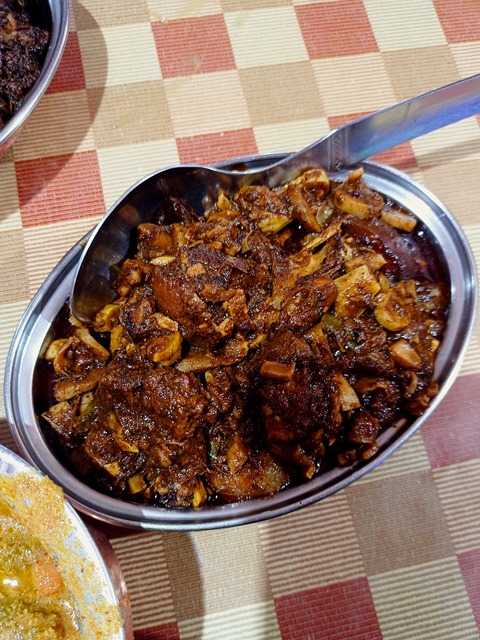
The tender bamboo shoot curry was made with coconut, and had the taste of mustard seeping through each bite. The soft yet firm texture of the bamboo pieces with a peculiar sweet, benign flavour paired well with the coconut and was a treat to the taste buds. The bamboo shoots, we were told, are unavailable throughout the year, hence sourcing during monsoon and preserving them in salt for the rest of the year is customary.
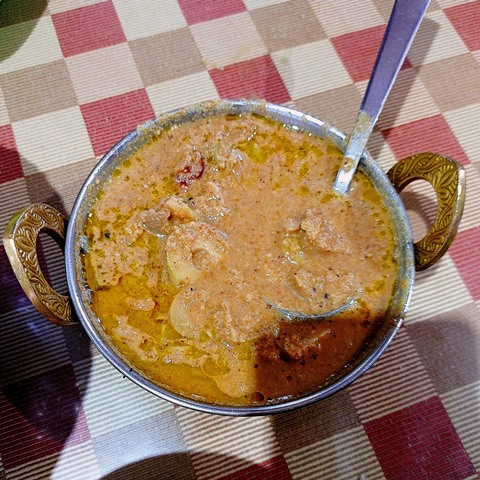
A specialty at the restaurant, the pork fry, a drier version of the curry, and pandi curry are what attracts the crowd, and the dishes being made oil free with fresh, local spices is what keeps them coming, we’re told. The one thing we observed as first time consumers of the Kodava cuisine is the ‘eat local’ approach to their food.
Everything on the menu of the restaurant was a culmination of the local spices and ingredients that are grown within the surrounding spice estates. Spices like cinnamon, pepper, cardamom, cumin, cloves are all sourced locally, and although used with an open hand, do not in any way, overpower the dish itself.
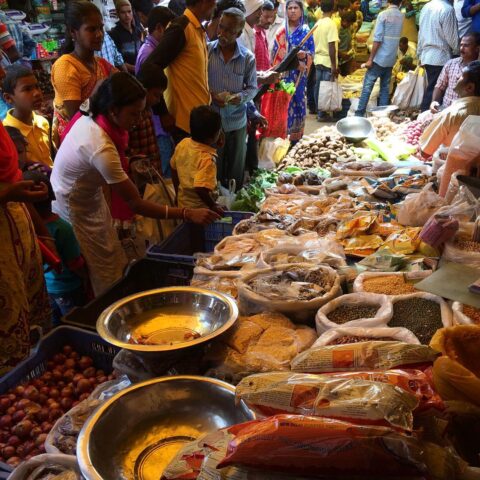
Each ingredient has a strong flavour but within the dish, be it pork or bamboo curry, the spices are subdued and let the flavour of the main ingredient shine through. Each dish is prepared with regard for their ancestry, food culture, and has a taste of home. The food in the restaurant is made by the owners themselves. Each morning, Girish and Pushpa, cook everything that is to be served for the day, preparing recipes that have been passed down from generations. The spice blends or masalas used in the food are blended in-house, adding warmth that can only be compared to cup of hot coffee on a cold, rainy day. This eatery, we were told, began with a mere four tables, unsure of how the locals would react to the Kodava food, but can now accommodate over fifty people at once. During a brief conversation about how it all began, Pushpa explained “When we started this restaurant, there were no eateries that served traditional Kodava food in Madikeri. We wanted to put our traditional recipes out there.” For decades, the Kodava tribe’s culinary treasures and traditional recipes have been orally passed down through generations like a closely guarded secret. And it is these culinary gems that have found their way onto the plates of everyone dining at Coorg Cuisine, including us, who stumbled onto Madikeri’s culinary heritage, all thanks to curiosity, hunger and the internet!
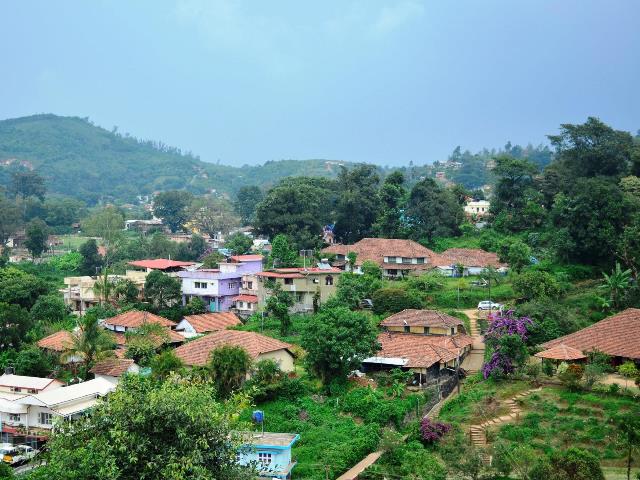
Nishita is a food writer and blogger, who loves learning about new cultures, their cuisines and history. Her work has been published in publications in India and New Zealand, like India Food Network, Stone Soup Syndicate, Debate & CEIA Magazine to name a few. She believes that stories are hidden everywhere, you just have to look around well enough!
Translations and detailed descriptions are provided to give a better understanding of the story to people from different cultural backgrounds across the globe.

